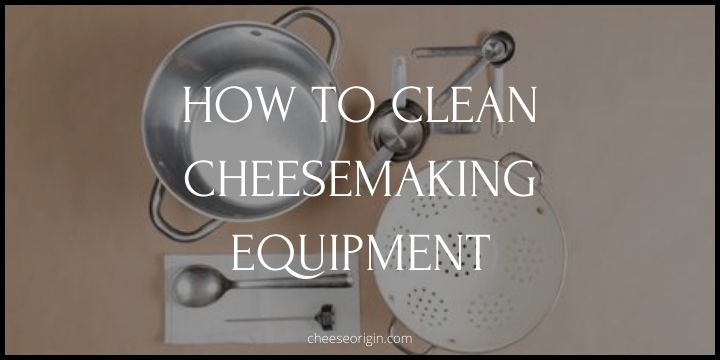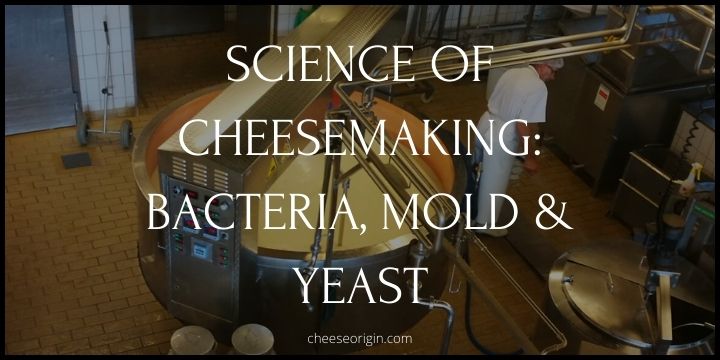How to Clean Your Cheesemaking Equipment (CARE)

Having absolutely clean equipment is essential to successful cheesemaking. If your equipment is not clean, it may contaminate your next batch of cheese.
Cheese is alive (it is made up of microbes, read here to learn more about the Science of cheesemaking), therefore, you do not want harmful bacterias to interact with your cheese.
How to Clean Your Utensils Properly (The Right Way)
Any utensils that come in contact with milk such first be rinsed in cold water followed by hot water.
Rinsing in cold water will help prevent the accumulation of milkstone, which creates unnecessary bacteria buildup which may contaminate your next batch of cheese.
5 Crucial Tips for an Ultra-clean Workspace
Before making your next cheese, make sure:
- To close your window especially on windy and/or rainy days
- Keep your pets out of the kitchen as they contain coliform bacteria
- Do not bake anything (especially bread) for at least 24 hours prior to making cheese to avoid contamination by yeasts.
- Do not use the same towel for bread making with cheese making. In fact, do not use any dish towels or sponges at all. Use only paper towels.
- Raw meat may be a source of salmonella so make sure to keep them away from the counter which you are making cheese.
How to Sterilize Your Cheesemaking Equipment
It is advice to sterilize your equipment before and after use. You can sterilize using these methods:
Star San
The most common form of sanitizing in cheesemaking is Star San.
Star San is made of food-grade phosphoric acid and is odorless, flavorless and biodegradable.
The acid residue is smart enough to fight off unwanted microbes if left un-rinsed and flexible enough to automatically become inactive (and tasteless) when comes in contact with milk.
How to use Star San
- 2 tablespoons for every 5 gallons of water. Mix well.
- Wipe or spray the mixture on your tools
- Remember to air-dry
- Keep the remaining mixture in a sealed container
- Shelf-life of mixture could last up to 4 weeks (if it’s too cloudy, discard it)
Recommended Star San:
[amazon box=”B0064O7YFA”]
Boiling
Place your equipment in a pot of boiling water for 10 minutes. Temperature should be at least 185°F or 85°C.
Oven
Heatproof equipment can be place in an over for 1 hour. Set temperature to 340°F or 171°C.
Steam
Small utensils can be steamed in a large kettle with about 2 inches of water in the bottom for 10 minutes.
Sterilize Equipment for Different Materials
For Wooden Items
Wooden items like cheese board may be scrubbed and air-dried.
For Mats
Mats must be boiled or place in a steaming large kettle for a minimum of 10 minutes.
For Food-grade Plastic and Stainless Steel Equipment
Use household bleach (sodium hypochlorite) to sterilize food-grade plastic and Stainless Steel equipment.
Steps:
- Add 2 tablespoons of household bleach (sodium hypochlorite) per gallon of water
- Mix well
- Use a clean paper towel
- Dampen paper towel with the mixture
- Wipe all work areas
- Make sure to wash them thoroughly after wiping with bleach because residue of sodium hypochlorite will destroy cheesemaking bacteria and kill rennet. Don’t know what is rennet? Click here to find out more.
Conclusion
After rinsing, air-dry all your equipment and store them in a clean environment.
Articles you might be interested:





